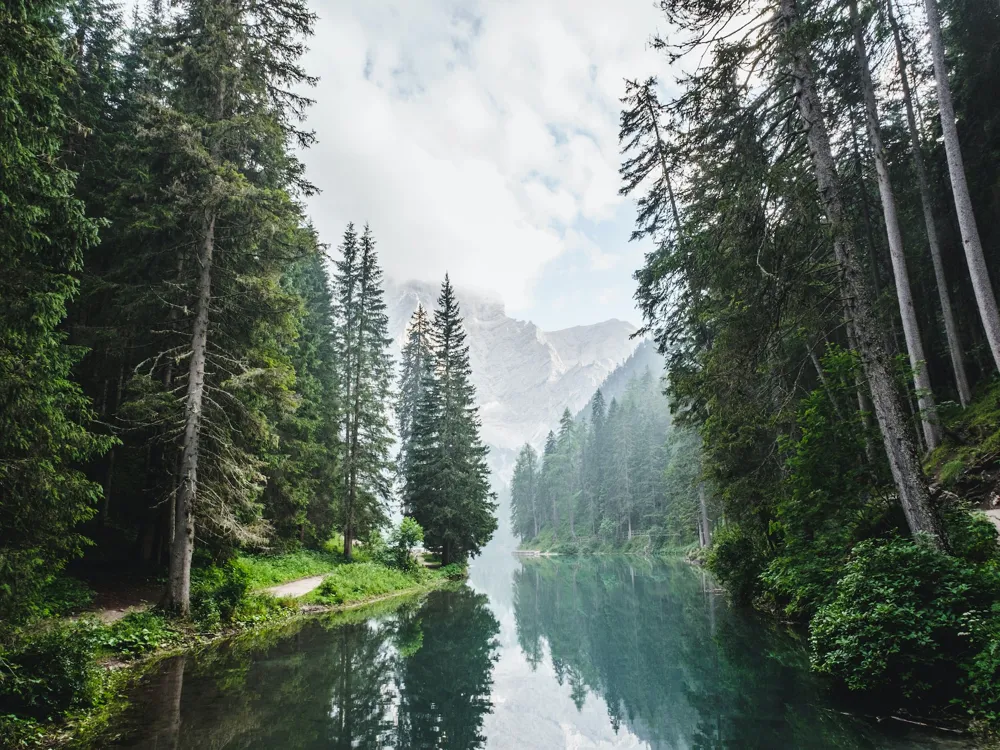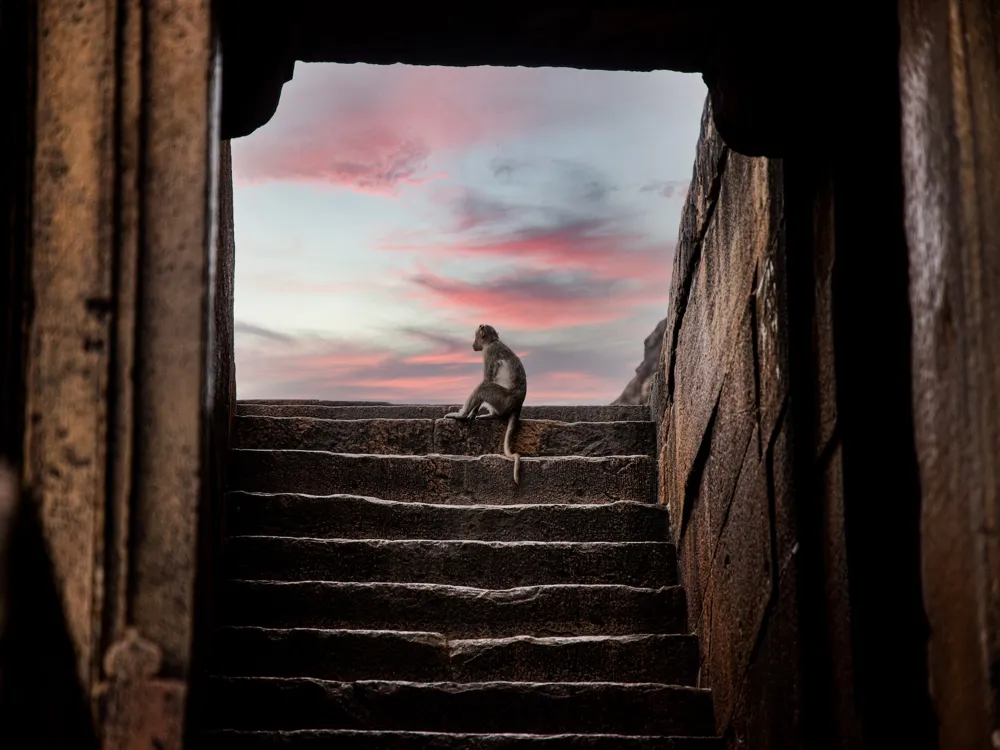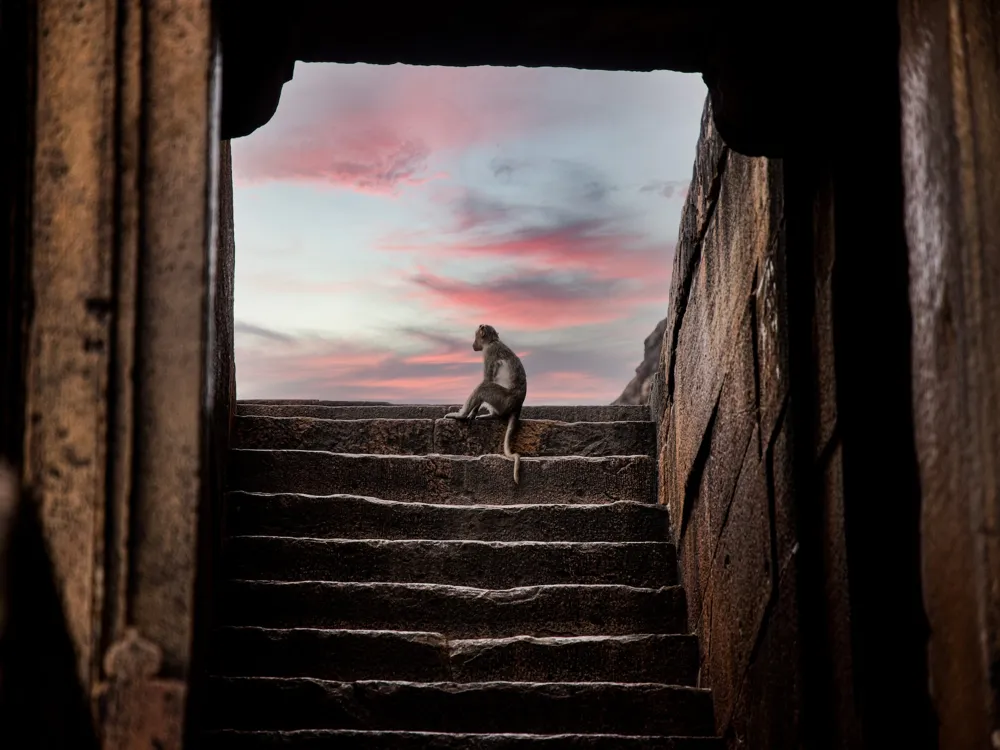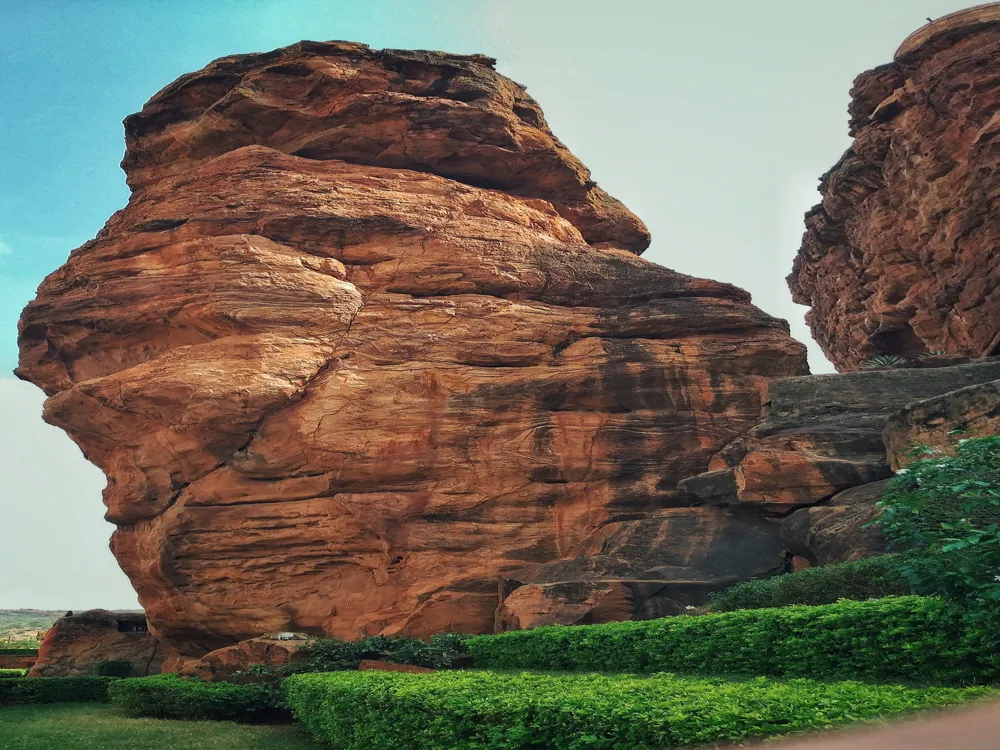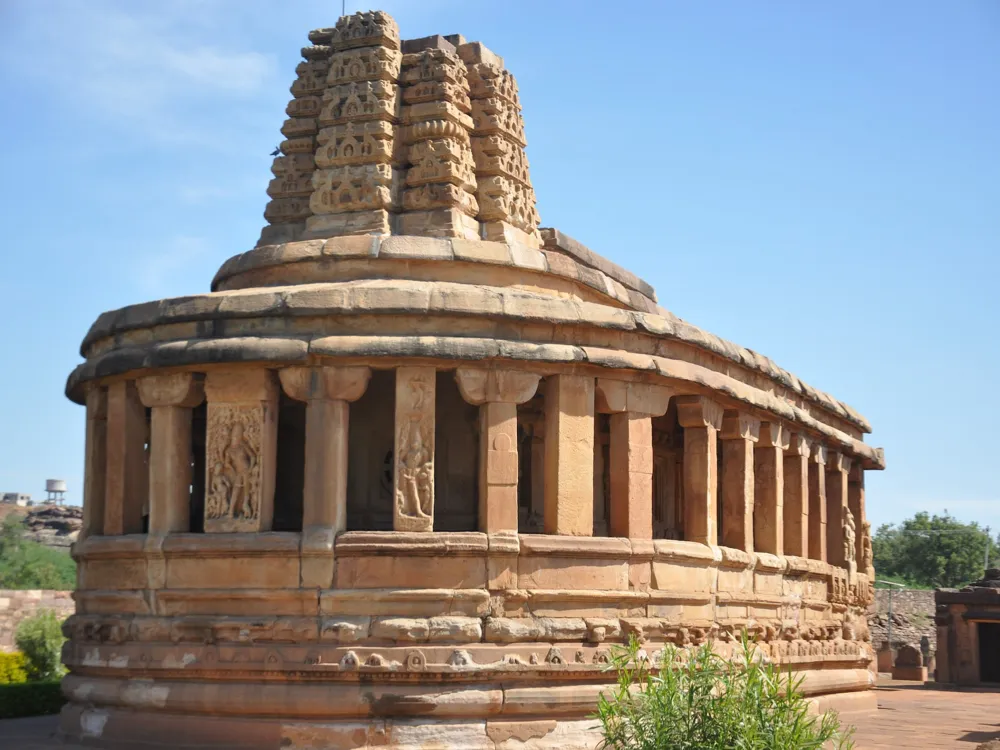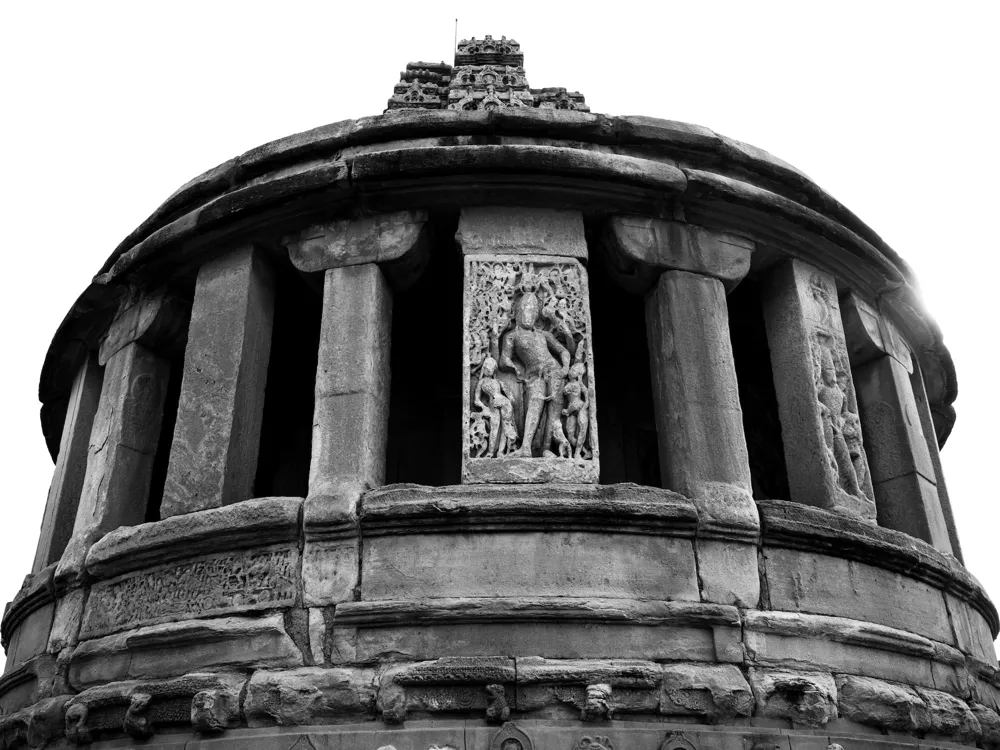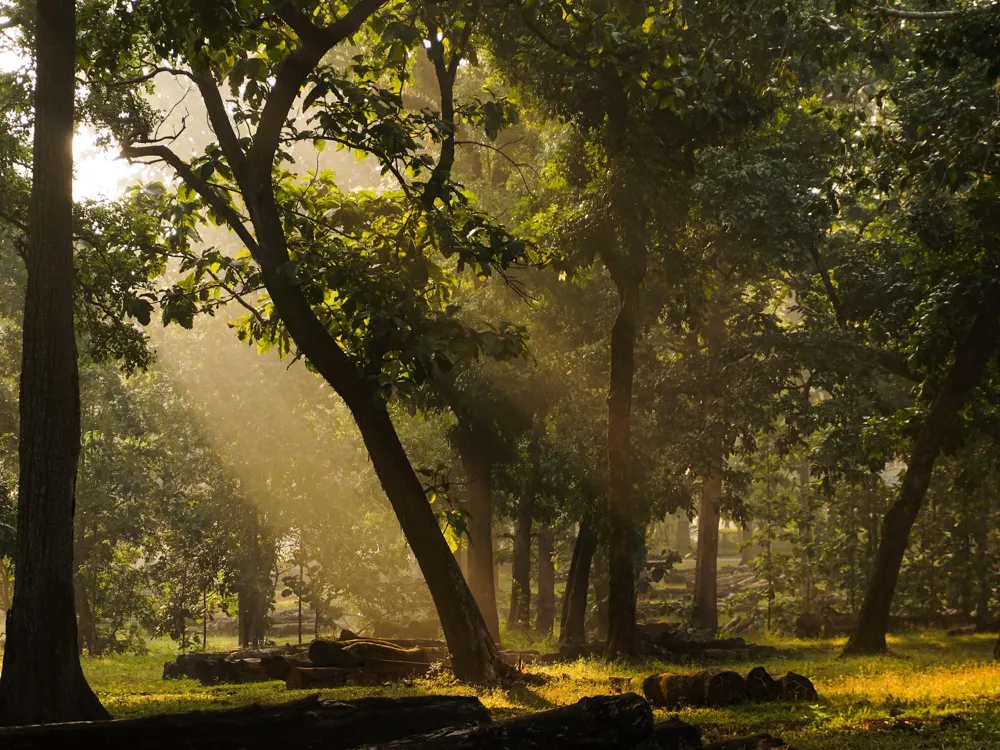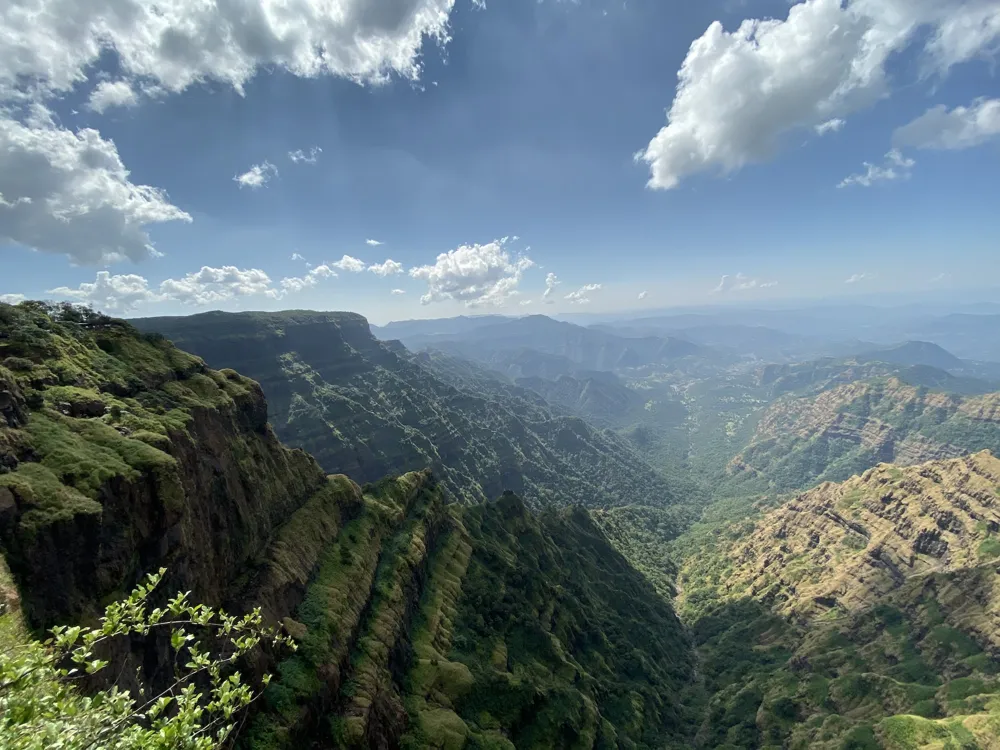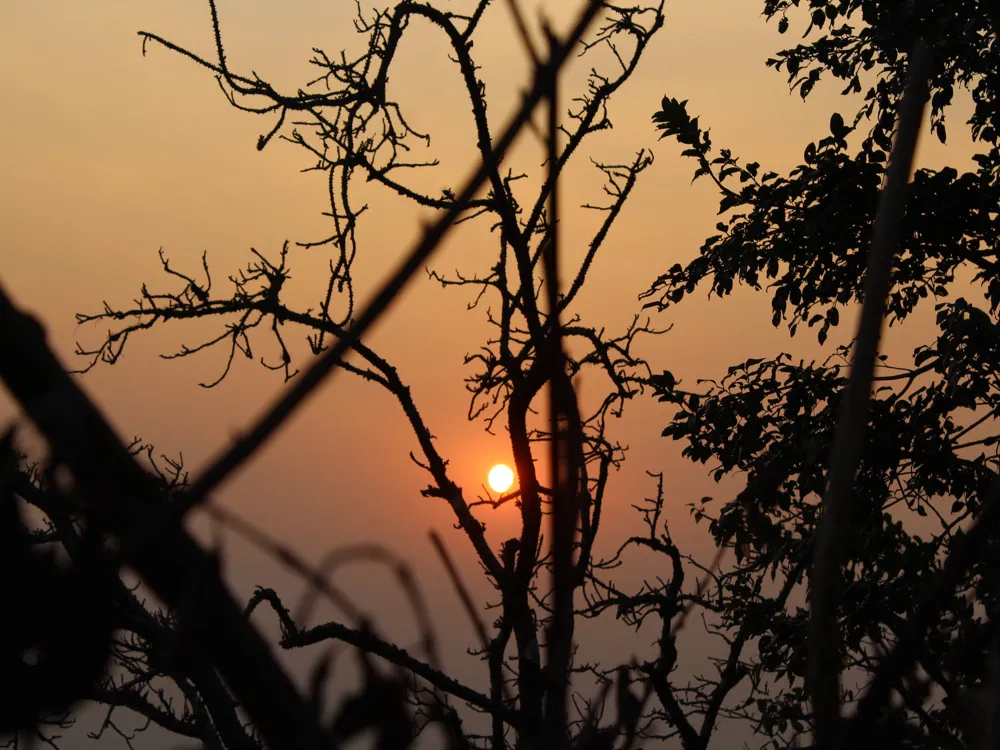Nestled in the heart of Badami, Karnataka, Agastya Lake is not just a natural wonder but a historical marvel that has witnessed the rise and fall of many dynasties. This serene lake, named after the sage Agastya, holds more than just water; it's a reservoir of myths, legends, and historical narratives. Badami, formerly known as Vatapi, was the regal capital of the Chalukya dynasty, and Agastya Lake has been an integral part of its landscape for centuries. The lake is surrounded by red sandstone hills that echo tales of a bygone era. These hills are adorned with ancient cave temples, each narrating a different story of the past. As you approach the lake, the first thing that strikes you is its tranquil beauty juxtaposed against the rugged terrain. The water, often a serene blue, mirrors the changing colors of the sky. The shores of the lake are dotted with steps known as ghats, where locals and tourists alike can be seen enjoying the peaceful environment. Agastya Lake is not just a picturesque spot but also a significant historical site. The waters of the lake are believed to be holy, with several temples around its perimeter adding to its sanctity. The Bhutanatha group of temples, which grace the eastern side of the lake, present a splendid example of early Indian rock-cut architecture. These temples, dedicated to Lord Shiva, exhibit a confluence of architectural styles from different eras, reflecting the rich cultural heritage of the region. The history of Agastya Lake is as deep as its waters. According to local legends, the lake was created by the sage Agastya, an important figure in Hindu mythology. It is believed that the sage had the power to absorb water from the ocean, and he created this lake to quench the thirst of the locals during a severe drought. Archaeologically, the lake has been a significant source of water since the time of the Chalukyas. It provided water for drinking, and agriculture, and supported the lives of countless generations. The significance of Agastya Lake extends beyond its historical and mythological importance. It is a vital source of biodiversity, hosting various species of birds and aquatic life. The lake's ecosystem is a delicate balance, reflecting the interdependence of nature and human history. As a wetland, it plays a crucial role in maintaining the ecological balance of the region, providing a habitat for numerous species and recharging the groundwater. In conclusion, Agastya Lake is a jewel in the crown of Badami, offering a glimpse into the rich tapestry of Indian history and culture. It's a place where nature and history converge, creating a landscape that is both enchanting and enlightening. A visit to Agastya Lake is not just a journey through scenic beauty but a voyage through time, unveiling the layers of history and mythology that have shaped this region. The architectural grandeur of Agastya Lake and its surroundings is a testament to the artistic and engineering prowess of the ancient Chalukya dynasty. The lake itself is a marvel of ancient hydrological engineering, reflecting a deep understanding of water management and environmental harmony. The ghats, which line the lake, are not merely functional structures for accessing the water but are also significant architectural elements that enhance the lake's aesthetic appeal. The most striking architectural feature around Agastya Lake is the Bhutanatha group of temples. These temples represent a fusion of architectural styles, incorporating elements from the North Indian Nagara style and the South Indian Dravida style. The earliest of these temples date back to the 7th century and showcase the evolution of rock-cut architecture over the centuries. The intricate carvings on the temple walls depict scenes from Hindu mythology, showcasing the skill and creativity of the artisans of that era. The architecture around Agastya Lake also includes other significant structures like the Badami cave temples. These four cave temples, carved out of the sandstone hills, are a remarkable example of Indian rock-cut architecture. Each cave temple is dedicated to a different deity and exhibits a unique architectural style. The caves are adorned with beautiful carvings, sculptures, and murals, each telling a story of religious and cultural significance. The layout of the structures around Agastya Lake follows the natural topography of the region, blending seamlessly with the surrounding landscape. This harmony between architecture and nature is a hallmark of Chalukyan design. The stepwells, another architectural element near the lake, are not only sources of water but also exemplify the exquisite craftsmanship of the era. These stepwells, with their detailed carvings and geometric precision, serve as a window into the advanced engineering and artistic skills of the time. The architecture of Agastya Lake and its surrounding temples and structures is not just a display of historical grandeur but also a symbol of the socio-cultural significance of the region. These structures were not only places of worship but also served as centers for social gatherings, cultural activities, and educational pursuits. The temples and other architectural features around the lake were integral to the daily lives of the people, reflecting a deep connection between the built environment and the community. In summary, the architecture of Agastya Lake is a blend of artistic beauty, engineering ingenuity, and cultural significance. It stands as a proud reminder of India's rich architectural heritage, inviting visitors to explore its depths and discover the stories etched in its stones. The ideal time to visit Agastya Lake is between October and March when the weather is pleasant, and the natural beauty of the lake and its surroundings is at its peak. Avoid visiting during the monsoon season as the area can get quite slippery and the water levels may rise. Be sure to carry water bottles, sun protection like hats and sunscreen, comfortable walking shoes for exploring the area, and a camera to capture the scenic beauty. If you plan to visit the temples, carry appropriate attire as a sign of respect. The area around Agastya Lake is of religious significance. Visitors are advised to respect local customs and traditions. This includes dressing modestly, especially when visiting temples, and refraining from littering or causing any disturbance in the serene environment. Apart from Agastya Lake, take time to explore the nearby cave temples, archaeological museum, and the Badami fort. Each of these sites offers a unique glimpse into the region's rich historical and cultural heritage. Keep yourself hydrated, especially during the warmer months. Also, be cautious of street food and prefer eating at reputable restaurants to avoid any health issues. Agastya Lake in Badami is well-connected by road and rail. The nearest major city is Hubli, which is about 100 km away. Visitors can reach Badami by train, with the Badami railway station being the closest. For those who prefer to travel by road, there are regular buses and taxis available from major cities like Bengaluru, Hubli, and Belgaum. The nearest airport is in Hubli, from where one can hire a taxi or take a bus to reach Badami. Read More:Overview of Agastya Lake, Badami, Karnataka
Architecture of Agastya Lake
Tips When Visiting Agastya Lake
Best Time to Visit
Essential Items to Carry
Respecting Local Customs
Exploring Nearby Attractions
Staying Hydrated and Healthy
How To Reach Agastya Lake
Agastya Lake
Badami
Karnataka
NaN onwards
View badami Packages
Weather :
Label : Must Visit
Tags : Lake
Time Required : 30 minutes to 1 hour
Constructed in : the 5th century
Entry Fees : No Entry Fee
Nearest Bus Stand : Badami Bus Station
Planning a Trip? Ask Your Question
Badami Travel Packages
View All Packages For Badami
Top Hotel Collections for Badami

Private Pool

Luxury Hotels

5-Star Hotels

Pet Friendly
Top Hotels Near Badami
Other Top Ranking Places In Badami
View All Places To Visit In badami
View badami Packages
Weather :
Label : Must Visit
Tags : Lake
Time Required : 30 minutes to 1 hour
Constructed in : the 5th century
Entry Fees : No Entry Fee
Nearest Bus Stand : Badami Bus Station
Planning a Trip? Ask Your Question
Badami Travel Packages
View All Packages For Badami
Top Hotel Collections for Badami

Private Pool

Luxury Hotels

5-Star Hotels

Pet Friendly







